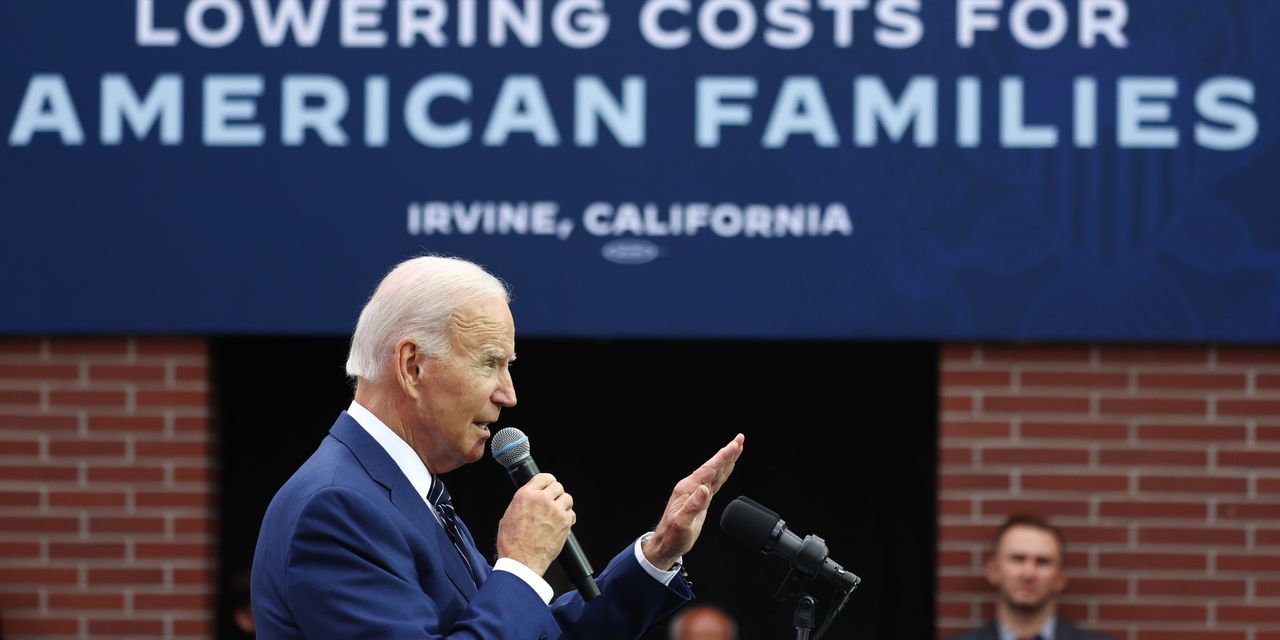Despite seven consecutive 8%-plus annual headline inflation readings, financial markets are being complacent about the growing risk that the U.S. may be entering a prolonged 1970’s-style era of slower growth and inflation, which could require even larger rate increases than already seen.
That is the view of research analyst Henry Allen at Deutsche Bank
DB,
the Frankfurt-based bank which saw a risk in June that inflation would fail to decelerate. As evidence that markets are still underestimating inflation, Allen cites the way stock and bonds have returned to a relative sense of calm to kick off the week, following a week of “breathtaking volatility” and despite the upside surprises to U.S. inflation.
Dow industrials staged a historic rebound on Thursday, for example, even after September’s consumer-price index came in hotter than expected. The index
DJIA,
also brushed off Friday’s losses and headed higher Monday morning along with the S&P 500
SPX,
and Nasdaq Composite
COMP,
Meanwhile, two-
TMUBMUSD02Y,
10-
TMUBMUSD10Y,
and 30-year Treasury yields
TMUBMUSD30Y,
which hit their highest levels of the past 11 to 15 years last Friday, were lower on Monday following the British government’s decision to rescind almost all proposed tax cuts in response to a chaotic selloff in U.K. bonds.
Inflation is running hot in the U.S. as well as Europe, where it hit 10% in the 19-country eurozone during September.
Many market participants are too willing to disregard comparisons to the 1970s, according to Allen, who lays out a case for why the decade offers a relevant road map for the U.S. and Europe. Among other things, the decade demonstrated that it can take years for inflation to return to normal even when the Federal Reserve hikes rates above 10%.
Fed policy makers have raised interest rates five times this year, lifting the fed-funds rate target to between 3% and 3.25% from almost zero; three of those times were by increments of three-quarters of a percentage point each. Traders now see a better-than-not chance of two more 75-basis-point moves in November and December.
“Markets are neglecting the fact that we are increasingly at risk of returning to
prolonged 1970s-style stagflationary dynamics, which would require an even
larger interest rate response,” Allen wrote in a note on Monday. “If the experience of the 1970s repeats, investors are in for a prolonged period of negative real returns for both bonds and equities.”
“This isn’t an idle warning,” he said. “Inflation has become increasingly broad-based and persistent. Central bank policy rates are still deeply negative in real terms, even after all the tightening so far. And fiscal stimulus packages to deal with the energy shock are putting further upward pressure on medium-term inflation.”
Financial markets remain steadfastly focused on central bankers’ next move or handful of moves instead of the bigger picture. Data provided by Tradeweb shows that breakeven rates, which reflect the market’s outlook on inflation, are hovering around 2.4% to 2.5%, up from where they were on Sept. 30, though down relative to earlier this year.
For Allen, the problem is that every month that inflation stays high, there’s a growing risk that expectations around future price gains become “unanchored” and move up. That, in turn, leads businesses and American workers to factor that into their prices and wage talks, resulting in a vicious feedback loop.
September’s U.S. CPI report not only surprised to the upside of economists’ and traders’ expectations with an annual headline rate of 8.2%, but the monthly core reading that strips out food and energy costs also jumped 0.6% versus Wall Street’s 0.4% estimate. The annual headline CPI rate has been above 8% every month since March.
Despite that trend, the consensus expectation, just as it was last year, is that inflation will fall over the next 12 months. But as the 1970s showed, any variety of shocks can emerge that add to the process of expectations coming unanchored, according to Allen, “and we cannot rule out more occurring.”
